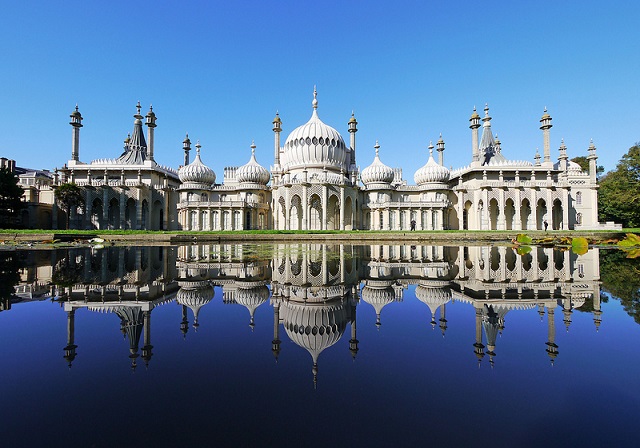Built in the late eighteenth century, Brighton Pavilion is a fairly lavish structure. While it may not be quite as ornamental, one would not be remiss in thinking that some of its features bear some subtle resemblance to the TajMahal. This is largely due to the influence that palaces in India had on its design. What is more difficult to imagine, however, is that the interior of Brighton Pavilion was once a relatively morbid sight, filled wall to wall with dying men.
This is not to say that people literally went there to die. In fact, it was quite the opposite; men went there in the hopes of survival. During the First World War, the general size of the extravagant palace became something of a utility. Used by the Allied troops as a hospital for Indian soldiers, Brighton Pavilion became a place of either death or survival for over four thousand men by the time the conflict had ended. Some went there in the throes of death, but survived to see the light once more. Others were not so lucky, passing on before they could ever make a full recovery.
One hundred years have now passed, and the site of morbid fascination is to become a site of commemorative celebration in honor of the centenary of World War I. India has previously honored Brighton Pavilion as a place of healing, presenting Britain with the aptly named Indian Gate just three years after the conflict. Now, after ninety-seven more years, a host of honorary ceremonies will pay tribute to both the Britons who managed the hospital and the Indians who lived and died there as they struggled to forge a victory for the Allies, The Telegraph reports.
Many Indians are already honored, at the site of the Chattri Memorial (built the same year that Britain received the Indian Gate). They are also honored in a number of museum exhibits, which feature information on former patients of Brighton Pavilion. Many of these patients have written letters which extensively state their gratitude for the British, who looked after not only their physical well-being, but the maintenance of their spiritual well-being as well.
Brighton Pavilion was more than a simple hospital. It was a place where every Indian soldier’s cultural, dietary, and religious traditions were highly respected. This is one of the many reasons that India was so grateful for the care that soldiers received there. Both the Chattri Memorial and Brighton Pavilion have now become places where Britons and Indians are able to pay their respects to men of both nations, who looked after each other both on and off the front during a treacherous and terrifying war.
